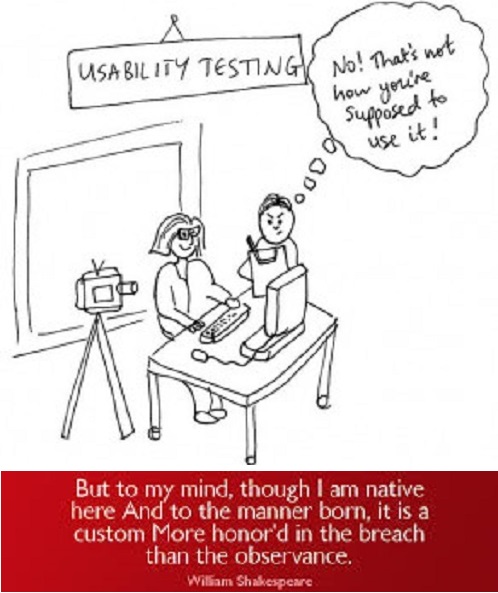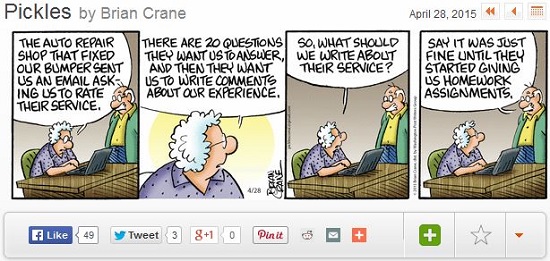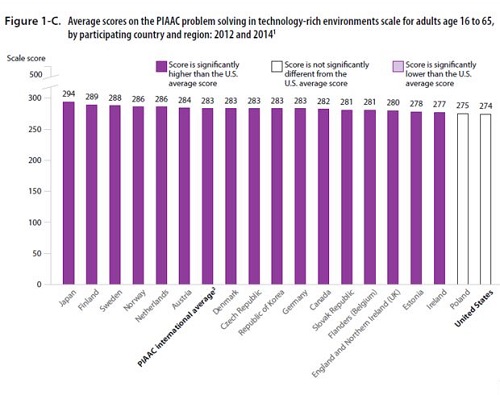Modern technology—especially all things enabled by the Internet—continues to produce miracles that could only be fantasized about a few short years ago. Among those miracles is a whole family of social networks, all of which offer near-instantaneously gratification. One can debate the extent of benefits offered by each of the social networks, but the billion-plus active Facebook users strongly implies that THEY believe in the benefits. And there are continuing examples where people can connect with their loved ones despite disasters, or just stay in touch simply and quickly. We wonder, however, if Instagram, SnapChat, Twitter, and their ilk are in the same league. The fact that the small amount of content (regardless of how clever it is) leaves as fast as it arrives suggests that it doesn’t have lasting value. In fact, this lack of permanance probably is a GOOD thing for many of the teenagers who are a considerable portion of the recipients. But actually, it appears that more and more teenagers are choosing to communicate in person, so it may be that they are tiring of the high volume of stuff with little lasting value.
Category Archives: Category
Those Who Live by Google Analytics Shall Die by Google Analytics
We at Wild Bill Web Enterpises have been tracking the visitors (and other metrics) for our three websites–including TechnologyBloopers, WhyMenDieYoung, and Wilddancer—on a weekly basis using Google Analytics and on a monthly basis using our ISP for nearly two years, and are baffled by the helter-skelter, all-over-the-map, random-looking numbers Google Analytics is providing us. Apparently this is a common problem, with a lot of possible causes, including some possibilities that could be our fault (well, the lack of useful guidance from Google and other sources isn’t really OUR fault). And it isn’t that our visitor volume is so high that we are the victim of Google’s sampling process. But we, and probably millions of other website developers, find it highly difficult, even impossible, to make any decisions based on this data. Why don’t the Internet and the Web take advantage of the huge computing power of the hardware and software to provide reasonably accurate statistics so that we can make things easier and more productive for both us and our visitors?
The Witches’ Brew that is YouTube
Google presciently bought YouTube from its founders in October 2006, “betting that the popular video-sharing site will provide it an increasingly lucrative marketing hub as more viewers and advertisers migrate from television to the Internet.” Silly us. We thought that YouTube was something that individuals could use to entertain ourselves, and that popular ones would bring their originators (and Google) some (or a lot) of money from ads.
Well, Google sure isn’t making it easy for individuals, thanks to the messy combinations of accounts, email addresses, channels, and browsers that makes it a nightmare to find videos once you have more than one of each of these four entities. And to make matters worse, Google threw its failing Google+ social network into the brew. Using Chrome we find three channels (or are these accounts?)—Wilddancer, Beekeeping (thus far empty as we try to sort out the whole mess), and Bill Coggshall—associated with one email address, and two channels—Car Tunes by Coggshall (which started out as “Car Tunes” that YouTube allowed me to reserve then reneged and forced me to add “by Coggshall”) and bill@technologybloopers.com (strange-looking channel, no?)– associated with a different email address (bill@technologybloopers.com). Using Firefox we find two channels (or accounts?)—Car Tunes by Coggshall and bill@technologybloopers.com—associated with email address bill@technologybloopers.com.
Usability Testing: More Honored in the Breach than the Observance
The Internet and the Worldwide Web have arguably changed the path of history. And they have made companies like Google into mega successes. But those companies have also caused much consternation among their millions of users. Why? Apparently they don’t bother to check with many (or any!) of those users to see how logical and self-evident their websites and associated tools are for their target audiences. Examples abound, and we will be posting some of the more egregious. But the Internet giants could have been even more successful, and keep website visitors on their sites longer (where they would be exposed to more advertisements) if their user interfaces were less opaque. The goal is usability, which is not rocket science. Two of most used tools are the Chrome browser and YouTube, which we will discuss in separate posts.
“Prediction is difficult, especially about the future”
Whether this truism came from Yogi Berra or Niels Bohr isn’t the point. We’ve made our share of bad forecasts, so can’t cast the first stone at the partners of Play Bigger Advisors for their July 15, 2015 analysis as to why FitBit should be trumped by GoPro. However, on June 1, 2016 the market capitalization for FitBit was $3.13 billion while that of GoPro was $1.44 billion. But we are not in the business of advising small companies how to get bigger faster, nor publishing a book called Play Bigger: How Pirates, Dreamers, and Innovators Create and Dominate Markets.
Ads Based on Recent Shopping Miss Their Target
I was shopping for MEN’s pickpocket-proof travel pants, and I must have visited travelsmith.com in my search. That was on Monday, May 2. Now, on Wednesday, May 4, EVERY site I visit—on searches totally unrelated to clothing—I am dealt a Travelsmith WOMAN’S Walkabout Knit Short-Sleeved Drape-Neck Top. I hope that Travelsmith is not paying Google (I am using Chrome) or another ad-dealing company very much for these ads. What is their logic? Do they think that I want to buy my wife this top (admittedly, at $27 it IS a lot cheaper than the pants)? Fortunately, after repeating this advertisement ad nauseum, Google graciously offered to let me fine-tune my ad preferences. Hmmm.
But there must be millions of other victims of these faulty algorithms. And some folks, such as the Wall Street Journal’s satirist Joe Queenan, are even more outspoken (e.g., in his ridicule of Amazon, Expedia, and Netflix).
Surveymania: A Toxic Internet Disease
Just because you CAN do something doesn’t mean you SHOULD do something. Unfortunately, the millions of souls around the world writing software are adding functionality a lot faster than overburdened consumers can use it. We can’t think of a better example of this than the now-omnipresent survey that arrives in our Inboxes within microseconds of our buying a product or using a service. The volume of junk snail mail is minuscule compared with that of junk email and junk surveys. Our own productivity and enjoyment of life are victims of this trend.
Well, you say, if we don’t vote for what we want, we are likely to be a victim of those lowlifes who do vote … for bad products and services. The best defense is to delete most all such surveys … heresy coming from a career market researcher, no? Certainly you should delete ones that clearly are just knee-jerk reactions from your suppliers. Worst are the ones that are pure bureaucracy, usually characterized by (1) purely multiple-choice questions with no open-ended ones where some insight may lie, and (2) a preponderance of questions about unimportant aspects but none or few about important ones. A recent one from Stanford Health Care was rife with such useless questions as (1) ease of scheduling your appointment , (2) minutes waited between scheduled appointment time and call to an exam room, (3) minutes waited in the exam room before being seen by a medical person, and (4) friendliness/courtesy of the nurse/assistant; nothing at all about the quality of the doctor’s diagnosis or the outcome of his/her prescribed treatment.
Perhaps even worse were those organizations who should, or even do, encourage feedback to correct their errors or improve their offerings, but then don’t take any action or even thank you. Google Translate, Google Maps, and Spreadshirt (custom T-shirts) come to mind. There is a time-tested principle that the best suppliers are those who listen to their customers and take actions to fix their errors or improve their products or services.
Live by the Sword, Die by the Sword
But it’s already too late to put the sword back in its place. The Internet, the Worldwide Web, Google Search, social networks, and other on-line miracles have given billions of people capabilities they never had dreamed of. But in their haste the makers of these tools have also enabled evil-doers capabilities beyond the masses’ worst nightmares. History is full of other technological advances that have been used for both good and evil purposes, but more recently cyberattacks have permitted individuals or small groups, sitting in safety at their personal computing devices, to wreak havoc on millions of innocent victims. These cyberattacks appear to be increasing in frequency and scope of havoc. Most recently several news sources reported the charging of an Iranian hacker on March 24 of his 2013 attack on a dam in Rye Brook, NY, which he found vulnerable using a technique called Google Dorking. (The wheels of justice certainly turn slowly … especially compared with the speed of computers and their hacker masters!)
Apparently he did not use his knowledge to operate the sluice gate of this small dam (perhaps because it was disconnected from computer control at the time). And although this dam is in a rather backwater community (pun intended) and not much of a threat to national security or even significant injury to people or damage to property, the ability of the hacker to infiltrate the computer system demonstrates a capability to attack a much bigger and more dangerous dam or other strategic infrastructure such as an electric power grid.
The really scary thing is that almost certainly many other sectors are under similar attacks. One such sector is hospitals. Within the last two months the computer systems at the Hollywood Presbyterian Medical Center, the Methodist Hospital in Henderson, KY, and the MedStar Georgetown University Hospital in Washington, DC were crippled by cyberattacks. These were not minor incidents; the overall MedStar 10-hospital group has 30,000 staff and 6,000 affiliated doctors. And patients in critical condition could die from the delays caused by inoperative computer systems.
Another sector is financial. On March 29 hackers breached the security at two large law firms whose giant Wall Street banks and corporate clients are constantly dealing with confidential matters, knowledge of which could net hackers millions of dollars through insider trading.
The general populace can only hope that the responsible governmental agencies are working hard to identify strategic facilities throughout the U.S. and its allies, and alert vulnerable ones so they can take steps to minimize the dangers from Google Dorking and other hacker nastiness. And also hope that “white hat hackers” (the good guys)–the modern-day equivalent of yesteryears’ vigilantes—step up their activities. It would help considerably if these strategic facilities would reward these hackers for their efforts.
Bloopers Beyond Technology: Theft of Bangladesh Funds is a Comedy of Errors and Law-Breaking By Humans

Technology does not exist in a vacuum. It is created by humans of varying degrees of ability and honesty. And technology involving the Internet is generally so complex, and created under time pressure, that it is more error-prone than more cautious and patient people would like.
According to the New York Times, slack security at the New York Fed (that’s the Federal Reserve Bank of New York), which most folks would consider a bastion of safe-keeping, allowed a bunch of money ($81 million or $100 million or some such sum) that rightfully belonged to poverty-stricken Bangladesh to be misappropriated by Chinese hackers and transferred to the Philippines, where in turn it was apparently transferred by above-the-law banks to putatively money-laundering casinos, who made it vanish beyond any chance of recovery. We’re not making this up. Mere prose and still images can’t do it justice. And no fiction writer could have imagined a more twisted tale.
The comedy continues if one reads the Zero Hedge blog, which apparently specializes in spreading misinformation of all sorts, including calling a spade a spade when it might not be. Entertaining to most of the world, but not to a few officials during whose watch this debacle occurred or to starving citizens of Bangladesh.
Americans Flunk OECD Literacy and Numeracy Tests
Maybe they couldn’t read the test? We wouldn’t be too surprised about the literacy tests. Nearly all of the other countries have to know a lot of English in addition to their own native languages. That forces them to do a better job of understanding the STRUCTURE of both languages and of thinking in multiple languages. But the technological accomplishments by Americans as a group are so impressive that it is nearly unbelievable that they rank dead last among the 18 top industrial countries according to an OECD report published in 2013. Unfortunately, it is hard to dig into the OECD (Organisation for Economic Co-operation and Development) research and its followup (which appears to be what triggered the Wall Street Journal article at this time) because the background, while numerate, is not presented in a literate manner. We sink into a swamp of academic gibberish.
Professor Andrew Hacker is not surprised at these abysmal results, as he believes that most American high schools and colleges teach math the wrong way. We at Technology Bloopers agree. We survived a lot of advanced math classes up through the masters level and wrote a PhD thesis full of statistical formulae. But most of what we—and most of the American populace–needed to know we learned by the end of eighth grade if we were diligent. Things like fractions and percentages. And some of the rest we might have learned even earlier in school by using Microsoft PowerPoint or Apple Keynote. Do most of us really need algebra? Or geometry (though there are some practical applications of concepts such as the Pythagorean Theorem (e.g., you can check for a square corner by using a tape measure and knowing that if you measure 3, 4, and 5 units on each of the 3 sides that the angle opposite the 5 side is a right angle, i.e., a square corner) even if you have no clue who Pythagoras was). Hopefully, by the time we graduate from high school we will have been exposed to simple column graphs like the one showing the OECD rankings, and have learned that the tiny differences it shows from country to country may not be significant. BUT, the gap between Japan and the Scandinavian countries on the one hand and the U.S. on the other hand probably is significant … and we need to change how we teach math and numbers to Americans.









